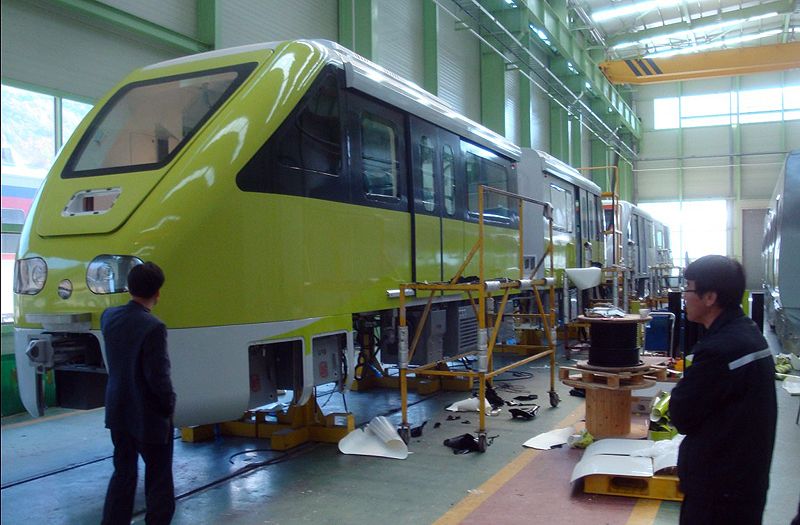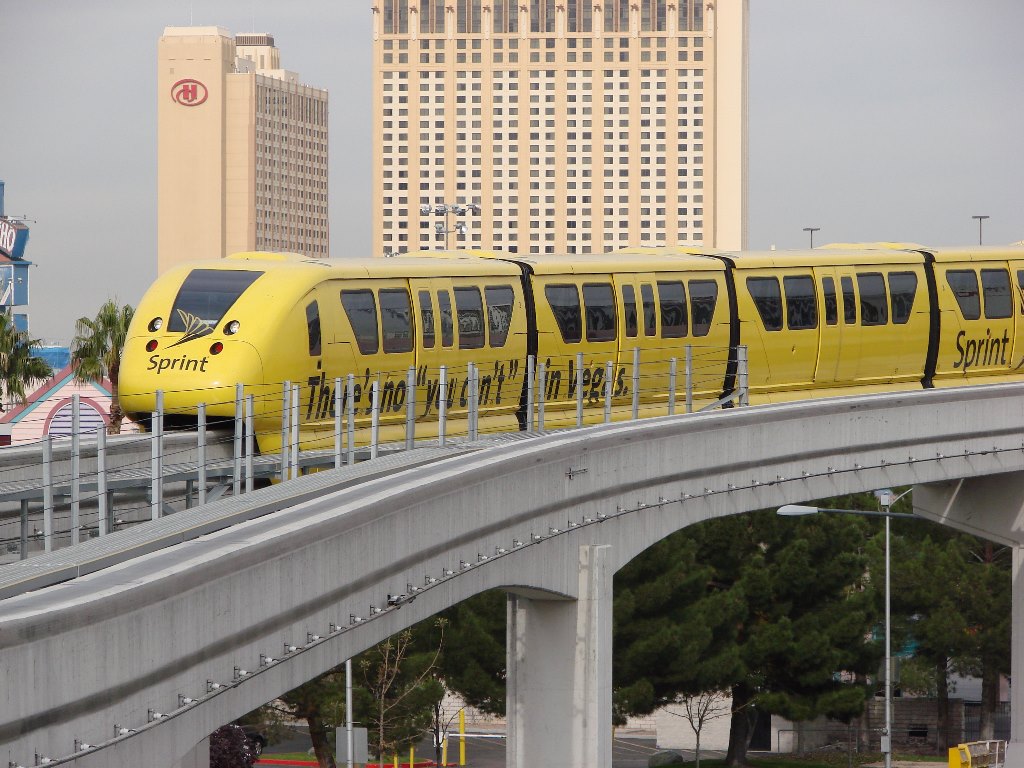THE
BREAK
ROOM
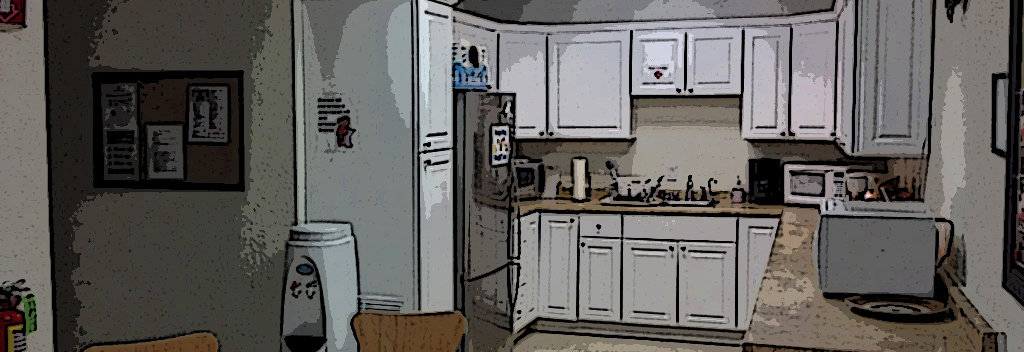
Monorails
Year after year Southern California ranks near the top in lists of places with the most traffic congestion. Cross town trips in the Los Angeles Basin – from Santa Monica to the Inland Empire and from Sunland to the southern tip of Orange County – can routinely take hours. And the congestion is getting worse as in-fill projects are built on the last remaining parcels of vacant land and old housing is replaced with modern, but higher density, housing. Many freeways we use are congested all day, every day, including weekends.
Alternatives to our personal vehicles are limited. Uber and Lyft use the same freeways that we want to avoid. Buses are ubiquitous, but agonizingly slow because they have to make their way through the same congestion.
For about twenty-five years the authorities have been building light rail and subways and adding regional commuter lines to existing heavy rail rights-of-way. Unfortunately, for most of us, the usefulness of these lines is very limited. We either don’t live close enough to walk to a station, or our place of work isn’t close enough to a station on the other end. Some of us need a vehicle during the day and, again, an access point isn’t close enough or the system does not go where we need to go.
Light rail in Southern California is limited by two different but related issues. One, it is very expensive to build. It’s expensive to build, mostly because of it’s second limitation. Real estate. So far, light rail has been built underground or in existing heavy rail rights-of-ways that have been relinquished by railroads. When planning an underground line estimates start in the billions and go up from there. When planning a line at grade it starts with finding an existing right-of-way. Recently, some light rail has been built in existing streets. As you can imagine, this involved removing street parking, sometimes removing traffic lanes, eliminating left turns, additional traffic signals and introducing rail cars to vehicular traffic. In some cases, light rail trains wait for the same signals that we wait for in our cars.
So, if underground is prohibitively expensive, on-grade right-of-way is disappearing and using local streets for rails is too disruptive to the community, what’s left? The obvious answer is overhead. When that’s said most people envision elevated rails as in Chicago and they immediately reject the idea because it doesn’t have the image that they want for their community. There are some modern elevated light rails, such as BART in the Bay Area, but it includes heavy structures to support the rail and trains and tight security to protect the public from the power rails. In Los Angeles, some light rail has been elevated, but it also includes heavy structures and overhead catenaries that give some the feeling of instant urban blight. So that’s it, right? Forget the overhead? Nope.
There’s one more type of rail that’s been overlooked for a long time and now it’s time to pull it out of the travel tool box. Of course, here at Wheeler & Gray, it’s always our first choice: monorail. Monorail was skipped over here when light rail was first planned for a variety of reasons, but monorail is a proven technology that benefits from the same advancements in technology as do other modes of transportation. Monorails also have inherent advantages over conventional light rial. Construction is faster, and therefore typically cheaper. The available right-of-way is any street with enough width between sidewalks to construct a row of four or five foot diameter columns and maintain the same vehicular traffic capacity. Utility relocations are minimal. Because they are overhead they do not affect traffic or pedestrians. The power conductor is embedded in the concrete rail and inaccessible. For an overhead monorail, the rail is the structure, as opposed to light rail, which must have a main structure to support the rails and another to support the wires. Where ever there’s a street with two lanes in each direction, or a center median, or parking lanes, or parkways, there is room for a monorail. Lastly, and this is admittedly subjective, monorails are aesthetic more pleasing than light rail with catenary systems and can be architecturally adapted to any neighborhood.
Of course, there are some disadvantages. The rails are bulky and heavy. They usually must be pre-cast and trucked to the route for installation. The rail is also the support structure, so it must be constructed to tight tolerances and high precision. Switches are obviously bulkier than light rail and restrict operating speeds. In some cases, on surface street rights-of-way may lose street parking on one side or, if routed over a median, some visibility for drivers is lost. Monorails cannot generally be built or operated at or near grade. This is mostly because the power conductor is embedded in the rail and exposed. Some think that the trains offer a lower ride quality, cannot travel at the same speed as light rail and are less durable. These have some validity, but in the end the decision may come down to one of two choices: no system or a monorail system.
Imagine that instead of an on-grade light rail system, with grade crossings, traffic restrictions and catenaries, a neighborhood is served with an aerial monorail, separated from traffic and riding on a sleek, state-of-the-art beamway that also carries the power for the train.
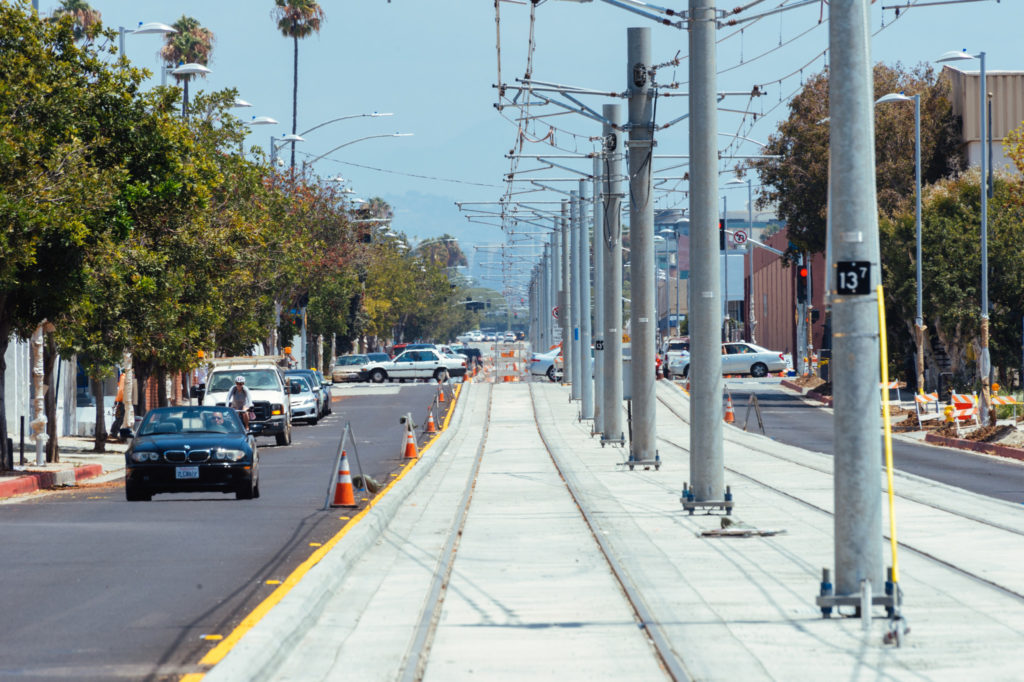
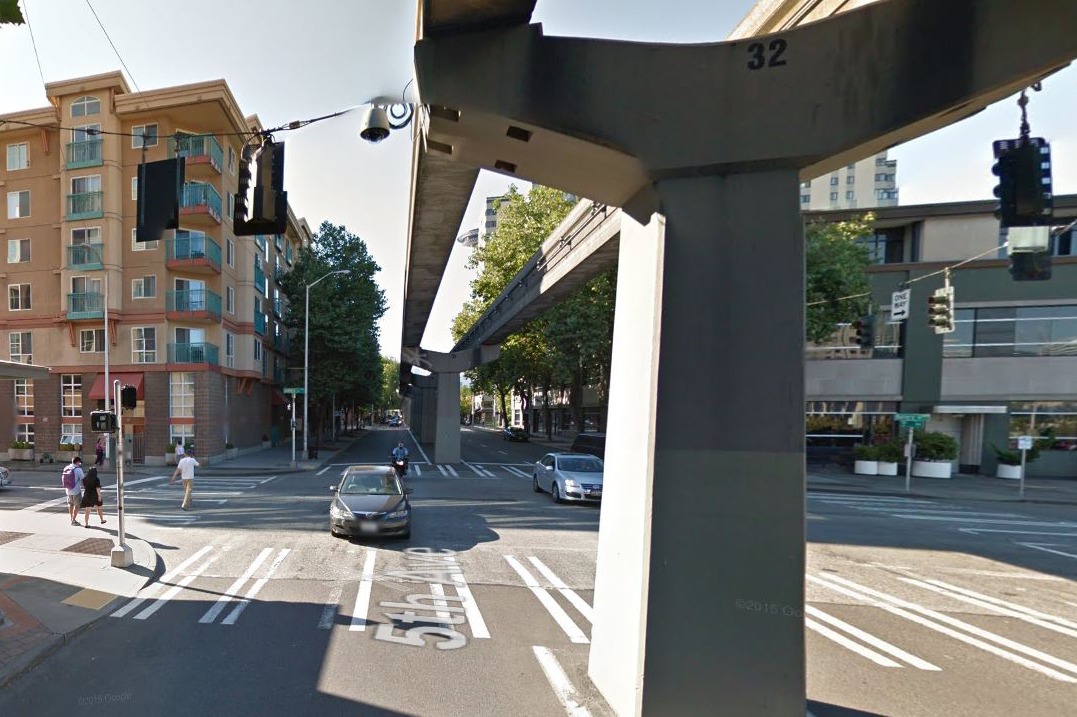
Instead of waiting for trains to pass through on-grade crossings and hoping that you don’t absentmindedly wander across your lane, jump the curb and wind up in the path of a 50-ton rail car, wouldn’t you rather have 20-feet of vertical separation as a monorail train glides overhead?
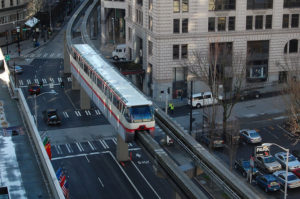
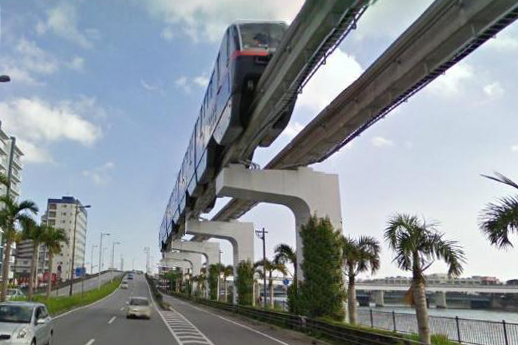
Monorails are remarkably adaptable to available spaces. They can be cantilevered over roadways, from the sides of buildings, routed over busy urban streets with mazes of underground utilities and can use virtually any street or road right-of-way with more than two lanes, all without dangling wires, grade crossings and tunnels. There are challenges with monorails, but those challenges are the result of a flexible system uniquely suited to a developed urban or suburban environment.
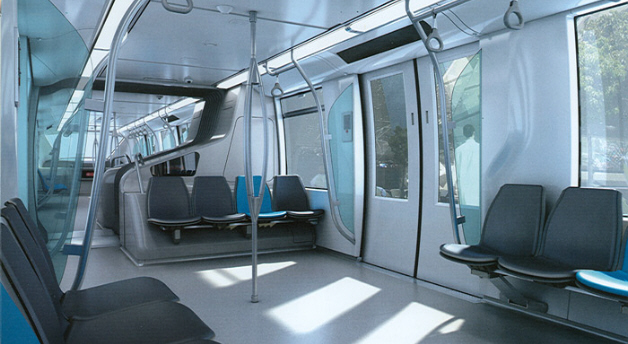
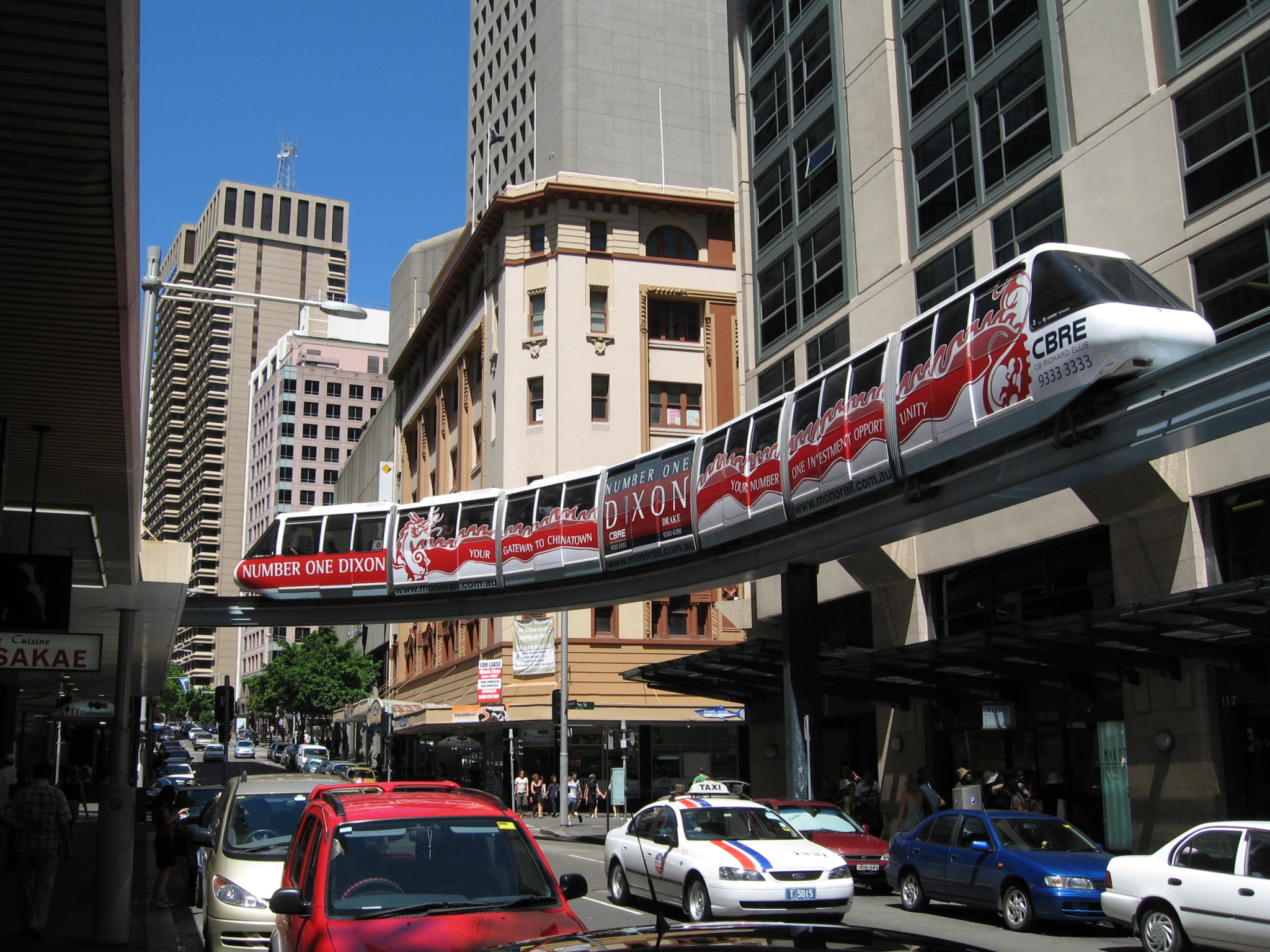
Modern monorails are every bit as roomy and comfortable as light rail. They are a proven technology that has taken advantage of all the advances in rail and vehicle design that are available today. They are easily maintained and the rail cars are constructed all over the world. The international market place makes sales of the cars competitive so that a buyer can get basic cars, but also all the modern amenities and comfort that is expected in modern transportation systems.
So as our streets and freeways become more crowded, the last rail right-of-way is taken and we’re left with only place two places to go with public transportation, down or up, let’s start looking up.
